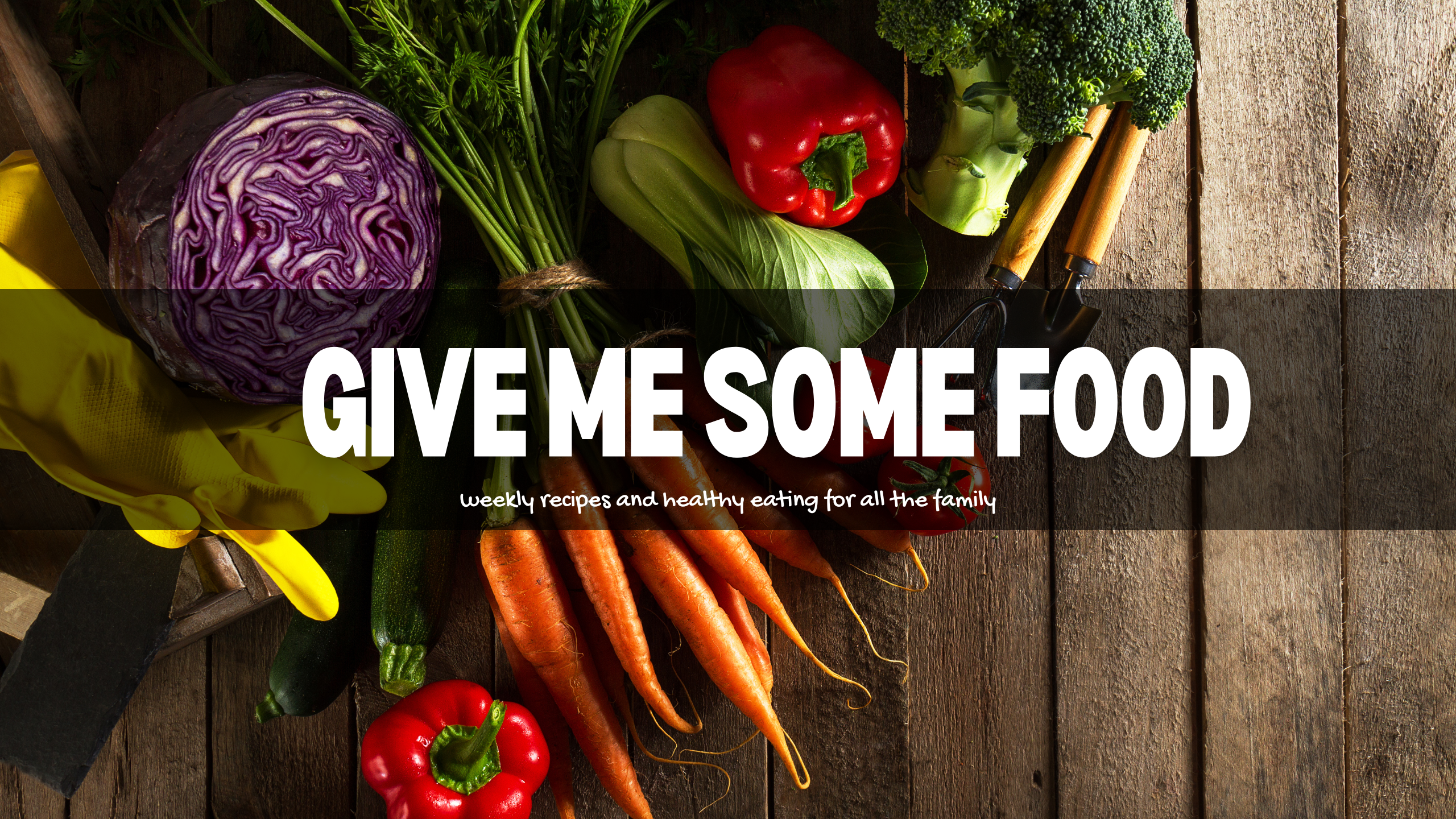Diabetes is a long-term health condition that impacts how the body processes blood sugar. It affects millions of people around the world and requires daily attention to maintain good health. One of the key aspects of managing diabetes is keeping blood sugar levels within a healthy range.
Diet plays a major role in managing diabetes effectively. Eating the right kinds of food helps regulate glucose levels and can reduce the need for medication. Whole grains, lean proteins, healthy fats, and plenty of vegetables are often recommended for maintaining stable blood sugar levels throughout the day.
Making smart food choices doesn’t just help with blood sugar control — it also lowers the risk of serious health issues like heart disease, nerve damage, and kidney problems. A balanced and mindful diet supports better energy, improved mood, and long-term wellness for those living with diabetes.
In this article, we will explore the role of diet in diabetes management, discuss what makes a food diabetic-friendly, and reveal the top 8 foods that every diabetic should consider including in their daily meals.
Understanding Diabetes and Its Dietary Needs
Diabetes primarily affects the body’s ability to regulate blood sugar (glucose). There are two main types:
Type 1 Diabetes: An autoimmune condition where the pancreas produces little or no insulin.
Type 2 Diabetes: More common, often linked to lifestyle factors, where the body doesn’t use insulin effectively.

Regardless of type, diet plays a central role in managing blood sugar levels and preventing complications such as heart disease, nerve damage, and kidney issues.
Why Diet Matters in Diabetes
When you eat, your body breaks down carbohydrates into glucose, a type of sugar that enters your bloodstream. To manage this glucose, your body uses insulin—a hormone that helps cells absorb glucose for energy or storage.
In people with diabetes, insulin is either not produced in enough amounts or doesn’t work properly. As a result, glucose builds up in the blood instead of being used by the body. Choosing the right diabetic food can help manage this process, support better blood sugar control, and reduce the risk of complications linked to high blood sugar levels.
Good diabetic food choices help by:
Preventing sudden spikes in blood sugar.
Providing steady, sustained energy.
Reducing insulin resistance.
Supporting heart health and weight management.
What Makes a Food Diabetic-Friendly ?
Not all foods are created equal when it comes to diabetes management. Here are key attributes that make a food ideal for diabetics:
Low Glycemic Index (GI): Foods with a low glycemic index (55 or below) raise blood sugar slowly and steadily. These types of diabetic food are ideal because they help prevent sudden spikes in glucose levels, making blood sugar easier to manage throughout the day.
High in Fiber: Fiber-rich foods digest more slowly, which helps keep blood sugar from rising too quickly after meals. In addition to supporting stable glucose levels, high-fiber diabetic food also improves digestion and may help with weight control.
Rich in Nutrients: The best diabetic food choices are packed with vitamins, minerals, antioxidants, and healthy fats. These nutrients support the immune system, reduce inflammation, and contribute to better long-term health for people with diabetes.

Low in Added Sugars and Refined Carbs: Eating less added sugar and avoiding processed grains can help prevent blood sugar spikes. Choosing diabetic food that’s low in refined carbs helps maintain better glucose balance and improves overall dietary quality.
The Top Diabetic Foods to Include in Your Diet
Let’s dive into the best foods scientifically proven to benefit people with diabetes. These options not only help stabilize blood sugar but also offer numerous other health advantages.
Leafy Greens (Spinach, Kale, Swiss Chard)
Leafy greens are among the most recommended vegetables for people with diabetes. They are packed with essential nutrients like vitamins A, C, and K, which support eye health, immune function, and blood clotting. These vegetables also contain powerful antioxidants such as lutein and zeaxanthin that help protect the body from cell damage.
One of the biggest benefits of leafy greens as diabetic food is their high fiber content. Fiber helps slow digestion and the absorption of sugar into the bloodstream, leading to more stable blood sugar levels after meals. This makes leafy greens ideal for managing diabetes naturally through diet.
Another advantage is that leafy greens are very low in calories and have almost no impact on blood sugar. This means they can be enjoyed in large portions without concern. Including leafy greens regularly in your meals is a simple way to support overall health and effective blood sugar control.
Benefits:
Reduce oxidative stress and inflammation.
Support eye health (important since diabetics are at higher risk for eye problems).
Promote healthy digestion and weight control.
How to enjoy: Add to salads, smoothies, soups, or lightly sauté as a side dish.

Berries (Blueberries, Strawberries, Raspberries)
Berries are a delicious and nutritious fruit option that can be a smart choice for people with diabetes. They are rich in fiber, which helps slow down the absorption of sugar into the bloodstream. This makes berries an excellent diabetic food for helping maintain stable blood sugar levels.
In addition to fiber, berries are packed with important vitamins like vitamin C, which supports the immune system and skin health. They also contain antioxidants, particularly anthocyanins, which give berries their deep red, blue, or purple color. These compounds may help reduce inflammation and improve the body’s sensitivity to insulin.
Including berries as part of your daily diet can support better blood sugar control while offering a sweet and satisfying treat. Whether added to yogurt, oatmeal, or smoothies, berries are a healthy diabetic food that combines great taste with important health benefits.
Benefits:
Lower blood sugar spikes.
Support heart health by improving cholesterol and blood pressure.
Provide natural sweetness without harmful sugar effects.
How to enjoy: Eat fresh or frozen as snacks, add to yogurt, oatmeal, or smoothies.
Whole Grains (Quinoa, Brown Rice, Oats)
Whole grains are a healthier choice compared to refined grains, especially for people managing diabetes. Unlike refined grains, whole grains keep all parts of the grain kernel—the bran, germ, and endosperm—making them more nutritious. This makes whole grains a smart diabetic food option for maintaining stable blood sugar levels.
The fiber found in whole grains slows down digestion and helps prevent quick spikes in blood sugar after meals. Fiber also promotes a feeling of fullness, which can support weight management—a key part of diabetes control. Vitamins and minerals in whole grains contribute to overall health and energy levels.
Adding whole grains to your daily diet can make a big difference in your blood sugar control. Examples of healthy diabetic food options include brown rice, oats, quinoa, and whole wheat products. These not only taste great but also support long-term wellness and balanced glucose levels.
Benefits:
Help regulate blood sugar levels due to slower digestion.
Improve satiety and help maintain a healthy weight.
Reduce risk of cardiovascular diseases.
How to enjoy: Use as a base for meals, in salads, or breakfast porridges.
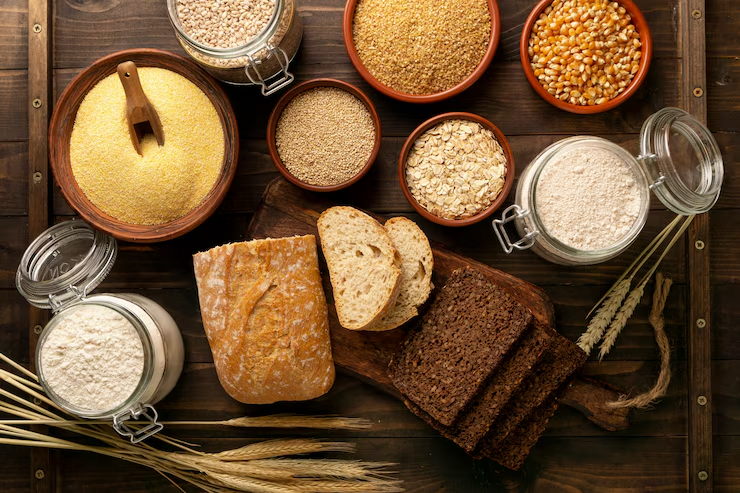
Fatty Fish (Salmon, Mackerel, Sardines)
Fatty fish like salmon, mackerel, sardines, and trout are excellent choices for people with diabetes. They are rich in omega-3 fatty acids, which are healthy fats known for their strong anti-inflammatory properties. Including fatty fish in your meals can support overall well-being and is considered a valuable diabetic food option.
Omega-3 fatty acids help protect the heart by lowering triglyceride levels and reducing the risk of heart disease—an important benefit for people with diabetes, who are more prone to cardiovascular issues. These healthy fats also support brain function and reduce inflammation throughout the body.
Fatty fish are low in carbohydrates and do not raise blood sugar, making them ideal for blood sugar management. Eating fatty fish a few times a week as part of a balanced diabetic food plan can improve your heart health while providing a satisfying and nutrient-rich meal.
Benefits:
Lower triglycerides and blood pressure.
Reduce inflammation common in diabetes.
Improve insulin sensitivity.
How to enjoy: Grill, bake, or steam fish 2-3 times per week as a main protein source.
Nuts and Seeds (Almonds, Walnuts, Chia Seeds, Flaxseeds)
Nuts and seeds are highly nutritious and make a great snack choice for people with diabetes. They are packed with healthy fats, plant-based protein, and dietary fiber, which together help keep you full and support steady blood sugar levels. These qualities make them an excellent diabetic food.
In addition to macronutrients, nuts and seeds also provide essential minerals like magnesium, which plays a role in blood sugar control and insulin function. Including foods rich in magnesium can support better glucose management and contribute to overall health for those living with diabetes.
Because they are low in carbohydrates and have a low glycemic index, nuts and seeds don’t cause quick spikes in blood sugar. Adding small portions of almonds, walnuts, chia seeds, or flaxseeds to meals or snacks can boost nutrition. As a diabetic food, they are both convenient and beneficial for daily blood sugar support.
Benefits:
Help control blood sugar and cholesterol.
Promote satiety and reduce overeating.
Improve heart health.
How to enjoy: Snack on a handful of nuts, sprinkle seeds on salads or yogurt.
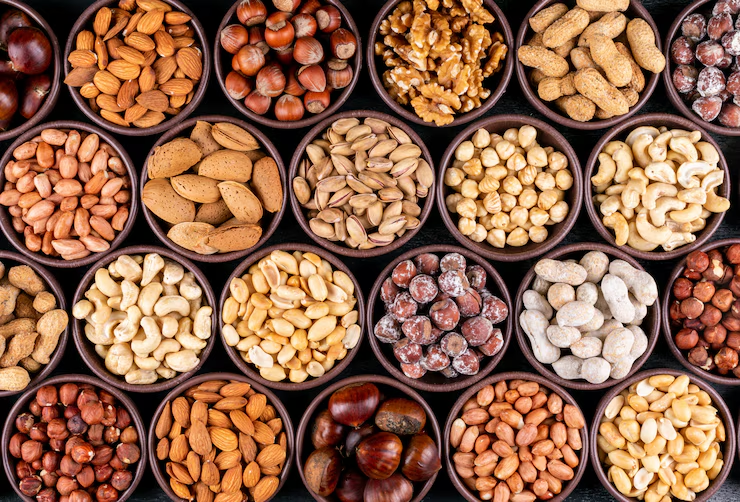
Legumes (Lentils, Chickpeas, Beans)
Legumes, such as lentils, chickpeas, beans, and peas, are highly beneficial for people managing diabetes. They have a low glycemic index (GI), which means they raise blood sugar slowly, making them an ideal diabetic food choice for maintaining steady glucose levels throughout the day.
These plant-based foods are rich in both fiber and protein, two key nutrients that help slow digestion and keep you feeling full longer. This not only supports blood sugar control but also aids in managing weight—an important part of diabetes care.
Legumes are also packed with essential nutrients like iron, magnesium, and B vitamins, which support overall body function and energy levels. Adding legumes regularly to meals, whether in soups, salads, or side dishes, can be a simple and affordable way to boost nutrition. As a diabetic food, legumes offer a powerful combination of taste, value, and health benefits.
Benefits:
Slow digestion and glucose absorption.
Improve blood sugar control.
Support weight management.
How to enjoy: Use in soups, stews, salads, or make healthy dips like hummus.
Greek Yogurt
Greek yogurt is a healthy and satisfying option, especially for people with diabetes. It is high in protein, which helps control hunger and slows the absorption of sugar into the bloodstream. This makes Greek yogurt a smart diabetic food choice for maintaining balanced blood sugar levels throughout the day.
In addition to protein, Greek yogurt is rich in probiotics—beneficial bacteria that support gut health. A healthy gut can improve digestion and may even enhance insulin sensitivity, which is essential for managing diabetes effectively. This makes it not only a tasty snack but also a supportive part of a diabetic diet.
Greek yogurt is naturally lower in carbohydrates than regular yogurt and does not cause rapid sugar spikes. Choosing plain, unsweetened varieties ensures you’re getting the benefits without added sugars. As a diabetic food, Greek yogurt offers a great mix of nutrition, flavor, and blood sugar support.
Benefits:
Lower risk of type 2 diabetes.
Improve blood sugar regulation.
Promote fullness and reduce hunger.
How to enjoy: Choose plain, unsweetened varieties and add fresh fruit or nuts for flavor.
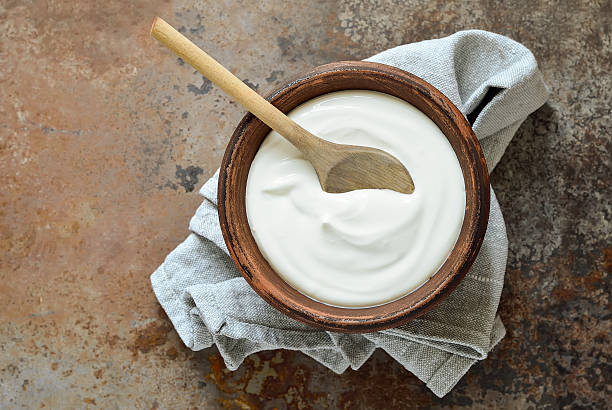
Cinnamon
Cinnamon is a flavorful spice that does more than enhance the taste of food—it may also offer health benefits for people with diabetes. Studies suggest that cinnamon can help improve insulin sensitivity, allowing the body to use insulin more effectively. This makes cinnamon a helpful diabetic food addition to daily meals.
One of the most promising benefits of cinnamon is its ability to lower blood sugar levels. When used regularly in moderate amounts, it may help reduce fasting blood glucose, making it easier to manage diabetes through diet. It’s a simple way to support better blood sugar control.
Cinnamon can be added to oatmeal, smoothies, or sprinkled on Greek yogurt for added taste and benefit. While it’s not a cure, it serves as a natural and supportive diabetic food that contributes to better glucose regulation when combined with a healthy lifestyle and balanced diet.
Benefits:
May reduce fasting blood glucose.
Contains antioxidants and anti-inflammatory compounds.
Adds flavor without calories or sugar.
How to enjoy: Sprinkle on oatmeal, yogurt, or add to coffee and baked goods.

Additional Tips for Diabetic-Friendly Eating
Beyond choosing the right foods, here are some practical guidelines to optimize your diet:
Portion Control: Even when eating diabetic food, large portions can still raise blood sugar levels. Use measuring cups or a food scale to keep portions moderate and better manage your glucose.
Balanced Meals: Create meals with a good mix of carbohydrates, protein, and healthy fats. A well-balanced plate of diabetic food helps keep blood sugar levels stable throughout the day.
Hydration: Drinking enough water is essential. Staying hydrated supports digestion and helps regulate blood sugar, making it an important part of a healthy diabetic food routine.
Limit Processed Foods: Avoid highly processed foods that are loaded with refined sugars, white flour, and trans fats. These can spike blood sugar quickly and reduce the benefits of a diabetic food plan.
Meal Timing: Eating smaller, well-timed meals made with diabetic food may help prevent sharp swings in blood sugar and keep energy levels steady.
Sample Daily Meal Plan for Diabetes Management
Here’s a simple, balanced meal plan featuring the top diabetic foods:
| Meal | Menu |
|---|---|
| Breakfast | – Oatmeal topped with fresh blueberries, cinnamon, and chia seeds – Greek yogurt (plain, unsweetened) |
| Lunch | – Spinach and kale salad with grilled salmon, cherry tomatoes, chickpeas, walnuts – Lemon-olive oil dressing |
| Snack | – A handful of almonds – One small apple |
| Dinner | – Quinoa bowl with roasted vegetables – Sautéed Swiss chard – Steamed broccoli |
| Dessert | – A few strawberries or a small serving of mixed berries |
Common Myths About Diabetic Food
Let’s clear up some misconceptions:
Myth 1: Diabetics Must Avoid All Carbs
Truth: Not all carbohydrates are harmful. Complex carbs that are high in fiber digest slowly and provide steady energy. Including the right type of diabetic food with healthy carbs is important for a balanced diet.
Myth 2: Fruit Is Off-Limits
Truth: Fruits like berries, apples, and pears can be part of a healthy diabetic food plan when eaten in moderation. Their fiber and nutrients offer great health benefits without causing sharp sugar spikes.
Myth 3: Diabetic Food Is Bland and Boring
Truth: Diabetic food doesn’t have to be tasteless. With the use of herbs, spices, and smart cooking techniques, meals can be both flavorful and enjoyable while still supporting blood sugar control.
Conclusion
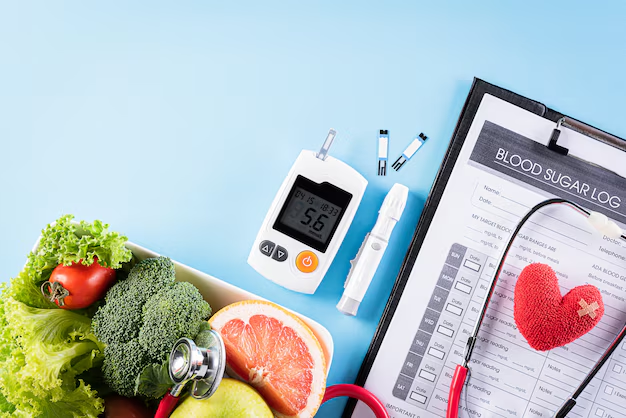
In conclusion, choosing the right diabetic food is essential for managing blood sugar levels and improving overall health for those living with diabetes. By focusing on nutrient-dense, low glycemic index foods like leafy greens, berries, whole grains, fatty fish, nuts, legumes, Greek yogurt, and cinnamon, individuals can stabilize glucose levels, reduce inflammation, and support heart health.
Including these top diabetic food into daily meals not only helps control blood sugar but also enhances energy and wellbeing. Remember, managing diabetes is about balanced, informed food choices rather than strict restrictions. Always personalize your diet with guidance from healthcare professionals to find what works best for your body. Embracing a diet rich in diabetic food can lead to a healthier, more vibrant life — proving that food truly is powerful medicine in the fight against diabetes.
FAQs
Q.1 What is diabetic food ?
Diabetic food refers to meals and snacks that help manage blood sugar levels. These include foods low in sugar and refined carbs, and rich in fiber, healthy fats, and nutrients.
Q.2 Can people with diabetes eat fruit ?
Yes, fruits like berries, apples, and oranges can be eaten in moderation. Choose whole fruits over juices for better blood sugar control.
Q.3 Are all carbohydrates bad for diabetes ?
No, complex carbohydrates like whole grains, legumes, and vegetables are part of a healthy diabetic food plan because they digest slowly and don’t cause sharp sugar spikes.
Q.4 How often should diabetics eat ?
Eating smaller, balanced meals every 3–4 hours can help keep blood sugar levels stable throughout the day.
Q.5 Is diabetic food bland or tasteless ?
Not at all. With the right herbs, spices, and ingredients, diabetic food can be flavorful, satisfying, and enjoyable.
